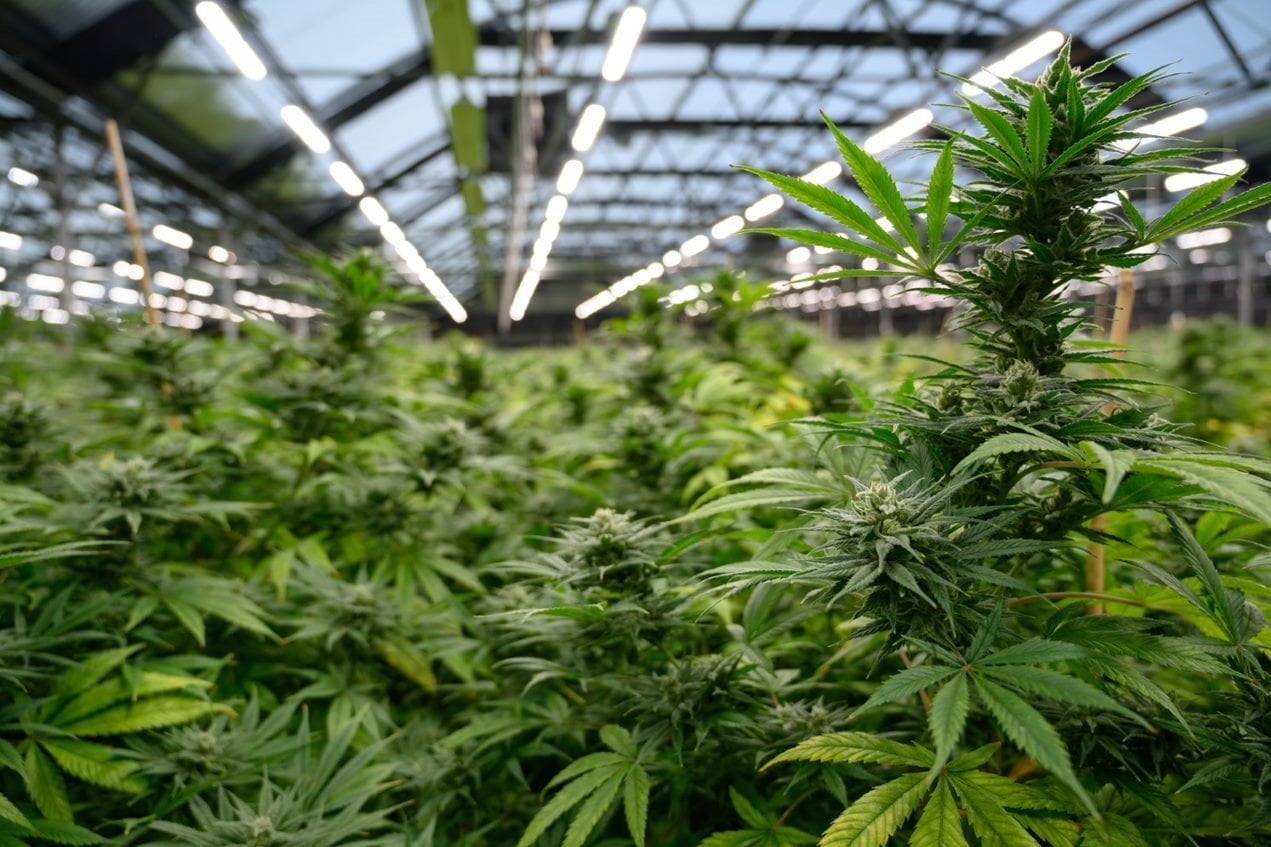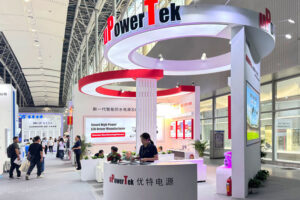One of the critical areas of LED applications is grow lighting. There are many advantages of LED grow lighting. LED has apparent benefits in the field of grow lighting due to its high luminous efficiency, low heat generation, small size, long lifetime and so on. Grow lighting will gradually be based on LED lighting. This analysis shows the application of LED grow lighting from the perspective of the role of LED in grow lighting, the current status of the LED grow lighting market and application, and the research status and development trend of grow lighting technology.

The primary use in agriculture is to extend the growing season, especially in cold regions with short summers. An obvious advantage of LED lighting is that the lighting generates very little heat. Growers can use interactive lighting to place the light in the middle or next to the plant, and irradiate the light to the lower part of the plant in the vertical or horizontal direction.
The most significant impact of LED is on growing leafy vegetables and herbs that can only grow to a very low height and grow on shelves. Each shelf has a dedicated set of LED grow lighting close to the plants. These planting techniques, including hydroponic cultivation, can achieve a shorter growth cycle than outdoors.
The application of LED in grow lighting involves growth lighting and signal lighting, and the application fields involve plant tissue culture, leafy vegetable production, greenhouse light supplementation, plant factories, seedling factories, herbs cultivation, edible fungus factories, algae cultivation. The application environment can be the top floors of skyscrapers, vertical farms, greenhouses, homes, shopping malls, research laboratories, and even abandoned containers.
The status of LED grow lighting market and application
From the perspective of market size, data shows that by 2021, the global LED grow lighting system market is expected to exceed 2 billion USD, of which LED lamps are 490 million USD. GGII believes that the output value of LED grow lighting system in 2019 will reach 7.6 billion RMB, an increase of 22% year-on-year, and the output value of LED lamps will reach 2.1 billion RMB, an increase of 23% year-on-year.
Regarding the specialty plant market, the legalization of specialty plants in Canada and the US, and the growing market is developing rapidly. There are 30 million legal consumers in Canada equivalent to 2.4 million pounds of annual consumption. Canada will need 656 ft² of planting area to meet demand, with a spot index of USD 1,200 per pound per head. The output can be increased by 5% by investing in LED, and the energy consumption will be reduced. The LED lamps’ investment can recover within one year, but the LED lamps can be used for five years. In 2020, the cannabis LED lighting market in Canada and the United States will exceed USD 400 million.
Currently, there are four main types of grow lighting sources on the market: LED lamps, fluorescent lamps, high-pressure sodium lamps, incandescent lamps and halogen lamps. Compared with traditional grow lighting fixtures, LED grow lighting not only have the characteristics of energy saving, environmental protection, low overall heat generation, and high reliability, but also have the advantages of adjustable spectrum, light quantity, light quality, and light direction, allowing increased cultivation per unit area. In addition, the LED wavelength range is wide [UVC (about 250nm) to infrared (about 1000nm)], and the half-wave peak of the wavelength is narrow.
Except for Mainland China, the most mature applications in the global grow lighting market are: North America, Europe and Japan. Statistics show that the most active area of grow lighting application is the United States and Japan, and well-known manufacturers account for 37% and 23%. The main distribution areas of China’s LED grow lighting manufacturers are the Pearl River Delta, which accounts for 60%, the Yangtze River Delta, 21%, and the Bohai Rim, 12%.
Status of domestic LED grow lighting industry
There are still many problems since LED grow lighting are still in their infancy in China. There are problems such as non-standard production design, lack of uniform product standards, and lack of actual verification of sales spectrum in terms of products. In practical applications, there are problems such as high cost and weak light penetration. So the market expansion of LED grow lighting is slow.
China is a big agricultural country, and there is a great demand for agricultural production supplies. LED grow lighting plays a key role of farming seedlings. At the same time, it has the advantages of energy-saving and environmental protection with a promising future. LED grow lighting represents the future development direction of agricultural lighting and has received strong support from various departments. With the improvement of LED grow lighting technology, the potential market demand is released, and the industry will enter a stage of rapid development.
Research status of grow lighting technology
A variety of grow lighting LED light sources were shared in detail, including medium and small power light sources, discrete high-power light sources, COB light sources, etc.

Among them, the small and medium-power light source packaging technology is mature, the industrialization degree is high, and the cost advantage is large, the wavelength and spectrum range is wide. Regardless of the light source and the grow lighting lamps are adjustable, the number and color can be freely matched, and the spectrum can be adjusted freely. PPF and energy density are low. Suitable for multi-level vertical farms.
The discrete high-power light source has high power, high PPF and high energy density, heat and electricity separation, good heat dissipation performance and stable work. It can achieve a variety of light output angles. The cost is high, the light source’s temperature is high when using high power, so good heat dissipation is required, which increases the cost of the lamp.
High PPE product application is suitable for greenhouse planting.
The COB light source has uniform light distribution, which saves the cost of one-time packaging of the light source and the light engine module’s production cost. The installation and production of the grow lighting is simple and convenient. The light source’s serial-parallel mode is fixed, so the number and color can not be freely matched, and the spectrum can not be adjusted freely. The package volume is large and the lamp size is limited. High PPF product application can penetrate large plants and fill light on the top.
There are multiple solutions in terms of grow lighting LED spectrum, involving multiple monochromatic light combination solutions, blue chip excitation phosphor solutions, full-spectrum solutions, etc.
A variety of monochromatic light combinations is based on the most effective blue-red light for plant photosynthesis. And far-red light that induces plant flowering and promotes leaf growth. Green light and UVA. these spectra are based on different plants Combine the most suitable spectrum according to requirements. The high cost is not suitable for the growth of every plant.
The blue chip excitation phosphor solution uses phosphors with different excitation wavelengths to obtain light energy in different wavelength bands according to plants’ different needs. The cost is much lower than the monochromatic light combination solution. PPF and energy density are low.
The full-spectrum solution realizes the full coverage of the visible light spectrum (400-700nm) required by plants. It is suitable for all plants and has a lower cost than the monochromatic light combination solution. The PPF and energy density are low, and the full spectrum excitation cost is high.
Mainly with white light, plus the 660nm red light combination scheme to improve the spectrum’s effectiveness, which is more economical and practical; far-red light and UVA can be added according to different types of plants and growth stages.
LED grow lighting development trend
LED grow lighting will play an essential role in improving agricultural production efficiency, improving food safety, and improving fruits and vegetables’ quality. The LED light source for grow lighting will develop further along with the industry’s gradual specialization and move in a more targeted direction.
The improvement of light efficiency and energy efficiency is the key to greatly reducing plant lighting’s operating cost. In terms of increasing output, according to plants’ developmental characteristics, it can be cultivated in stages and regions combined with light formula to improve the production efficiency and yield of each stage. In terms of enhancing the quality, nutrition regulation and light regulation can be used to increase the nutritional content Content and other health functional ingredients content.
Grow lighting has a strong demand for real-time control of light quality and light quantity. With the improvement of intelligent control technology and the application of the Internet of Things, a variety of monochromatic spectrum and smart control systems realize time control, light control, and plants’ growth state. Timely adjustment of light quality and light output is bound to become the primary trend in the future development of grow lighting technology.
uPowerTek has been focusing on flexible and intelligent solutions for grow lights and horticultural lighting applications in vertical forms for several years. 30-800W IP67 waterproof UL class P and ENEC certified drivers with unique features like dim to off and programmability are already in wide use globally. The wide input voltage LED drivers for 277Vac/347Vac/380Vac/480Vac grid lines offer more choices for high power applications, especially in US and Canada. Quick customization and professional service are one of the key reasons uPowerTek wins the global market.





